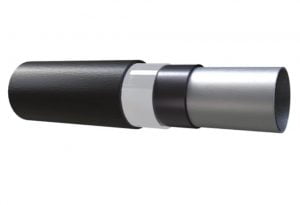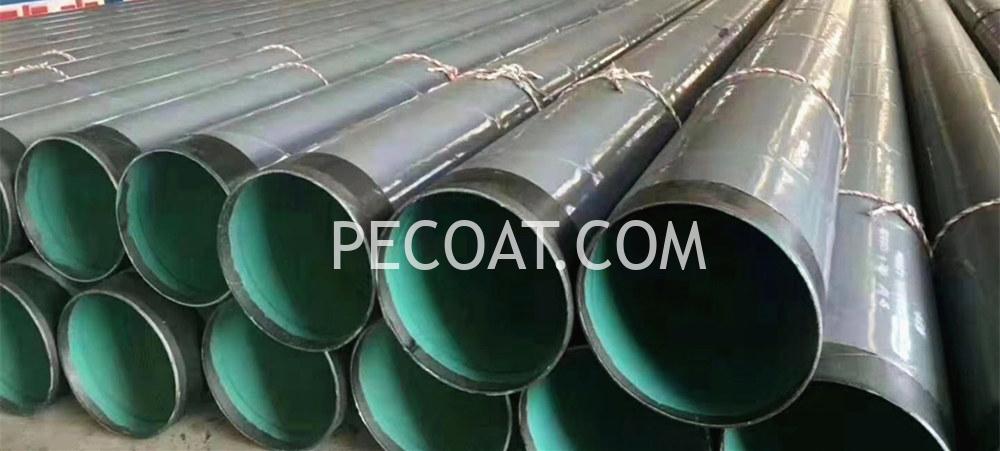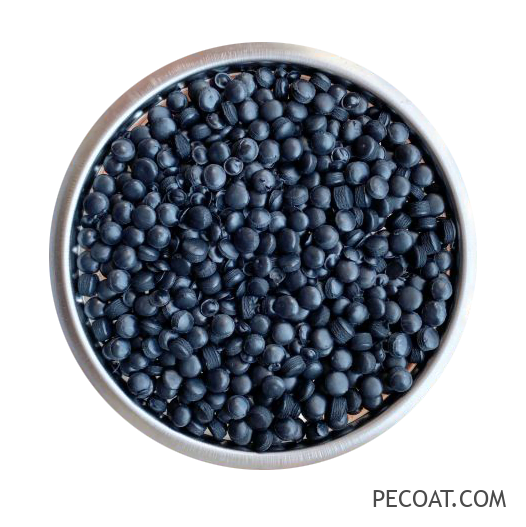Anti-corrosive Polyethylene Coating for 3PE Pipeline

The anti-corrosive polyethylene coating is generally a three-layer structure polyethylene anticorrosive coating, abbreviated as 3PE. The bottom layer is usually an epoxy powder coating, the middle layer is an adhesive, and the outer layer is a polyethylene coating.
Anticorrosive Coating Structure
The three-layer structure polyethylene anticorrosive coating is abbreviated as 3PE. The bottom layer is epoxy powder coating, the middle layer is adhesive, and the outer layer is polyethylene.
Performance
The first layer of 3PE is epoxy coating, the second layer is adhesive, and the third layer is extruded polyethylene coating. The layers are tightly bonded to each other to form a composite structure, complementing each other’s strengths. It uses the strong bonding force between epoxy powder and steel pipe surface to improve adhesion; and utilizes the excellent mechanical strength, chemical stability, insulation, resistance to plant root penetration, and water resistance of extruded polyethylene to improve its overall performance. This makes the overall performance of the three-layer PE anticorrosive coating more prominent and comprehensive, suitable for harsh environments with high requirements for mechanical properties, soil stress resistance, and water resistance of the covering layer, such as gravel soil, rock sections, areas with high soil moisture content, and areas with developed plant roots.

Application
Before applying the anticorrosive coating, the surface of the steel pipe should be cleaned of grease, dirt, and other attachments, and the surface should be pretreated after preheating the steel pipe at a temperature of 40-60℃. The surface pretreatment quality should meet the requirements of Sa2.5 level of “Surface Rust Grade and Rust Removal Grade of Steel Before Painting” GB/T 8923, and the anchor pattern depth should reach 50μm-75μm. Weld slag, burrs, and other impurities on the surface of the steel pipe should be removed.
Use a pollution-free heat source to heat the steel pipe to a suitable coating temperature, and evenly apply the epoxy powder coating to the surface of the steel pipe. The adhesive must be applied during the epoxy powder curing process. The polyethylene layer can be coated using a longitudinal extrusion process or a lateral wrapping process. For steel pipes with a nominal diameter greater than 500mm, the lateral wrapping process is recommended. When using the lateral wrapping process, ensure that the polyethylene on both sides of the overlap and the polyethylene on both sides of the weld are completely rolled and compacted, and prevent the polyethylene coating surface from being crushed. When using the longitudinal extrusion process, there should be no voids on both sides of the weld. After the polyethylene layer is coated, ensure that the fused epoxy coating is completely cured, and then cool it with water to a steel pipe temperature not higher than 60℃.
Repair
When defects are found on the 3PE pipeline, for damages less than or equal to 30mm, it is recommended to use radiation cross-linked polyethylene repair patches. When repairing, first remove the dirt at the damaged area and roughen the polyethylene layer. Then cut the polyethylene layer at the damaged area into a circle, and the edge should be turned into a blunt angle. Fill the hole with adhesive that matches the repair patch, and then stick the repair patch. The size of the repair patch should ensure that the edge is at least 100mm away from the edge of the hole in the polyethylene layer. When sticking the patch, heat it while rolling it with a roller or squeezing it with heat-resistant gloves to remove air until the adhesive around the repair patch evenly overflows.
For damages greater than 30mm, first remove the dirt at the damaged area, roughen the polyethylene layer, and cut the polyethylene layer at the damaged area into a circle, and the edge should be turned into a blunt angle. Fill the hole with adhesive that matches the repair patch, and then stick the repair patch. Finally, wrap a heat shrinkable tape around the repair area, and the wrapping width should be at least 50mm larger than each side of the repair patch.

Alternatively, the surface can be cleaned first, and then a two-component liquid epoxy coating can be used for anticorrosion. The dry film thickness should be the same as that of the main pipeline, and then the repair patch or heat shrinkable tape can be applied.

Goodmorning,
we need a PE coating with a European Food approval and an American FDA.
Best regards,
Andre